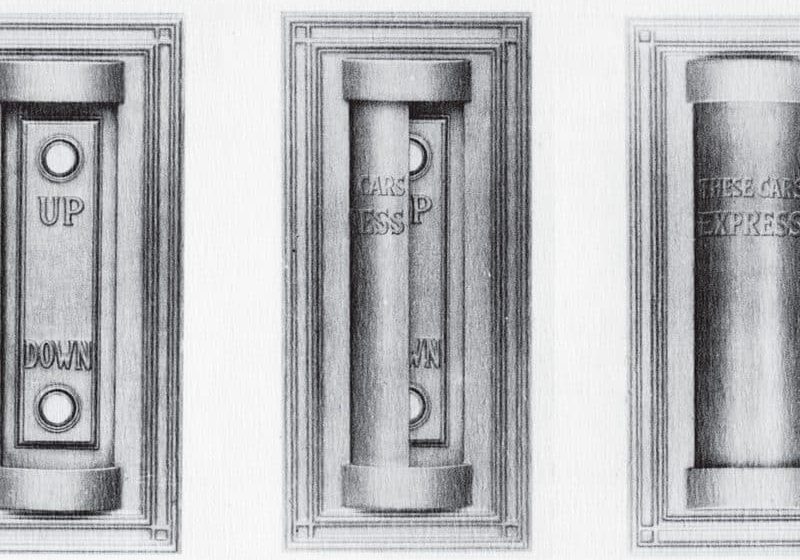Opening Up New Worlds
Aug 1, 2014

On a massive screen, SJEC showcases DigiGage virtual-window technology in its Suzhou, China, test tower.
DigiGage’s “virtual window” software and content for elevator cabs (“Reimaging the Future of Vertical Transportation,” ELEVATOR WORLD, February 2014) left such a positive impression on SJEC Corp. leaders when it debuted, SJEC decided to showcase the technology in its Suzhou, China, test tower. By installing what is likely the largest in-elevator screen — a 75-in. Samsung — SJEC is now able to demonstrate firsthand what the software can do, and offer it as an option on purchases. Existing and potential customers visit the 140-m-tall test tower, built in 2008, almost daily, according to SJEC. The DigiGage system was installed in June on a 4-mps elevator, and has already captured the eye of several customers interested in having it in their SJEC elevators. As business partners, DigiGage and SJEC share in the profits: DigiGage sells the software-sensor equipment, which provides cloud-based interface and content, while SJEC provides the hardware and installation.
Digigage software reacts to the movement of the cab using an independent sensor that is not connected to the elevator controller. The system creates a sensation akin to looking out a window, and not at a screen — as the viewers’ point of view in the digital content changes when the cab is going up or down, which, according to DigiGage, lends itself to a more natural-feeling ride, creates the illusion of space, deflects the user from noticing ride quality or ride duration issues and, in turn, even reduces stress. SJEC Corp. Vice president Su Jinrong and SJEC sales director Zhu Weibin agree the system makes for a vastly more pleasant user experience. Weibin remembers their first reaction:
“We were very impressed, and really wanted to test the system in our test facility and show it to our customers. The decision whether to showcase the basic, 24-in. low-cost and easier-to-install system or the shiny, premium version was easy. We wanted to get the maximum effect from the demo, knowing that we can then offer and sell various sizes and designs as the DigiGage software allows us to have complete control of the hardware. SJEC’s President Mr. Jin Zhifeng asked that we take this way of thinking to the limit and use the biggest screen possible. As we had the freedom to choose what suited us best, we decided to go with a gigantic, Samsung 75-in. screen.”
DigiGage co-founders Jonathan Einav and Ben Kidron said they developed the software to be flexible enough to support a vast array of screens and computers. This enables clients to easily purchase equipment locally. SJEC purchased its equipment in China.
Once equipment had been delivered, the screen was secured to the back of the cab with Video Electronics Standards Association-mount screw holes, which are standardized four screw holes arranged in a square for display devices. The screen was then covered with partially colored and painted reinforced glass, with two floor-to-ceiling side mirror strips.
Zhu said the system makes passengers’ journeys more interesting and cabs more aesthetically appealing, adding that the optional feature helps set SJEC apart from the competition.
Hua Zhiwei, SJEC’s Electrical Department manager, observes:
“While an entry level DigiGage-based system weighs in at 9.5 kg, the fact that we went with such a big screen and an entire glass wall caused the system to weigh about 300 kg and required us to rebalance the cab and readjust the counterweight. We fixed a small PC on the roof of the cab and lowered the screen’s High-Definition-Multimedia Interface and power cables to the cab itself. The fact that the system is activated by an independent sensor and is totally unconnected to the control system of the elevator made the installation much easier. The sensor is a box measuring only a few centimeters, which is connected to the computer. The required wireless connection was done using our existing Wi-Fi router.”
Hua said installation went smoothly and that SJEC employees easily learned how to perform future installations. Conducted onsite by DigiGage representatives, initial installation took only 40 min., he said, elaborating:
“We escorted the DigiGage team while they installed the system, so we will be able to do it ourselves in future installations. The process was wizard [setup assistant]-based, and included going up and down in the shaft to teach the algorithm the floors, speeds and movement patterns of our lift. When we changed the characteristics of the elevator, a new DigiGage algorithm calibration was needed. We handled it in-house using the wizard-based DigiGage calibrator software, in a process that took about 15 min. Now, we control all the system’s parameters using the DigiGage web-based control panel.”
Zhu said the only complicated part of the installation was handling the huge screen. However, he noted that most clients are expected to order considerably smaller screens. Zhu said the system makes passengers’ journeys more interesting and cabs more aesthetically appealing, adding that the optional feature helps set SJEC apart from the competition. Customer feedback so far has been good, he said. “We think this is a very good and novel solution that makes our clients, and their clients, happier in using our products.”
Get more of Elevator World. Sign up for our free e-newsletter.









